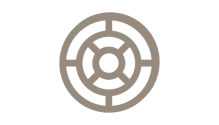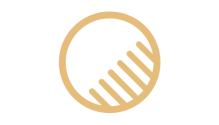The ICT Procurement market is significant in the EU (EUR 50.3 billion in the EU in 2011) and interoperability is proven to be vital in achieving savings and social benefits to citizens. As an example, if e-procurement was fully implemented across the EU, it would save annually 50-75 billion euro in Europe and increase transparency and public accountability.
Yet, it is currently difficult to purchase fully EU interoperable solutions: assessing which standards to use is costly and complex, there is a lack of knowledge on standards, and the adoption rate for standards and specifications is low, hence acting at the EU level is crucial.
Also, public procurement may be a key driver to innovation, and contracting authorities can act as a launch pad for innovative goods or services, and often this innovation passes through ICT solutions.
In an ideal world, procured solutions would be interoperable, and the ICT public procurement market would be transparent.
The European Catalogue will contribute to these objectives by offering a one-stop-shop for procurers on guidelines for procurement, including on vendor lock-in, on the use of standards, and a lifecycle costing scheme that accounts for the often neglected interoperability costs. It will streamline the numerous guidelines and provide for a platform of exchange and dissemination.
- Procurement needs a new approach to account for the challenges and potential of digitalization to create value and new services to citizens. The European Catalogue will connect the dots for procurers by listing applied guidelines on areas which help create value: strategic procurement (green, social, innovative), the seven principles of the EU eGovernment Action plan 2016-2020, finding appropriate digital skills, and reuse through the EIF and the CEF Building blocks. More here.
- Procurement needs, best practices, experiences, standards, guidelines - what type of information does the EU Catalogue contain and how content is proposed and selected. Understand what know-how it tries to create here. Understand what the EU Catalogue contains and the criteria to select standards here.
- Use of standards in procurement is regulated by trade agreements and by EU legislation, but 12% of tenders do not respect rules. The European Catalogue lists standards that can be referred in procurement. More here.
- Interoperability is insufficiently taken into account in public procurement. It is an external cost often ignored but which could be made part of the total lifecycle cost. It can help reduce the impacts of vendor lock-in. More here.
- The European Catalogue is part of the Digital Single Market Strategy and is action 5 of the EU eGovernment action plan. How does the EU Catalogue fit the policy context? Take a look at it here.
- In the ICT area, some Member States have developed a national catalogue of technical specifications which identifies technical specifications for use in procurement. How does the EU Catalogue link to national catalogues and CAMSS? What is the content of the EU Catalogue in the ICT area? What is the approach when it comes to Licensing conditions and open source? Discover it here.
- The new European Interoperability Framework and the EU Sharing and reuse framework take standards into account.
- The public procurement market suffers from a lack of accessibility to SMEs because of differing national rules and frameworks. Yet some Member States have put efficient procurement strategies in place that have resulted in increasing the access to SMEs. Learn more about how the European Catalogue tries to help SMEs to access cross-border markets.
- So what’s the plan? Learn about the next steps here.
Participate and contribute! Contributions and comments can be submitted in the forum.

EN 13757-3:2013 - Communication systems for and remote reading of meters - Part 3: Dedicated application layer

ISO/IEC 27000:2016 - Information technology — Security techniques — Information security management systems - Overview and vocabulary

ISO/IEC 27000:2016 - Information technology — Security techniques — Information security management systems - Overview and vocabulary

ETSI GS NFV-IFA005 V2.1.1 (2016-04) - Network Functions Virtualisation (NFV) - Management and Orchestration - Or-Vi reference point - Interface and Information Model Specification

ETSI GS NFV-IFA002 V2.1.1 (2016-03) - Network Functions Virtualisation (NFV) - Acceleration Technologies - VNF Interfaces Specification

ISO/IEC 17203:2011 - Information technology -- Open Virtualization Format (OVF) specification

ISO/IEC CD 19086-4 - Information technology -- Cloud computing -- Service level agreement (SLA) framework and technology -- Part 4: Security and privacy

ISO/IEC CD 19086-2 - Information technology -- Cloud computing -- Service level agreement (SLA) framework -- Part 2: Metric Model
Pagination





